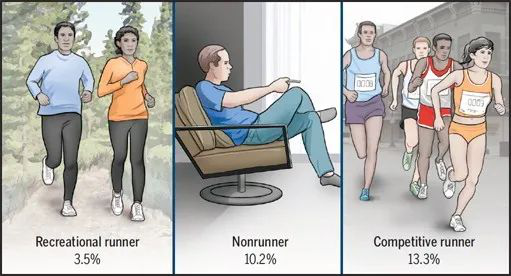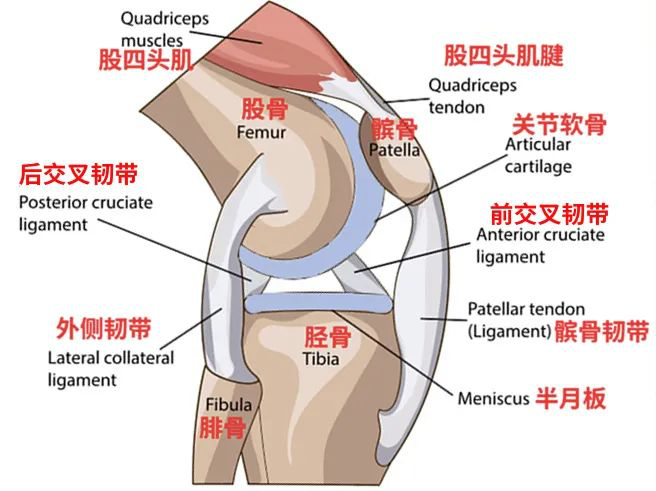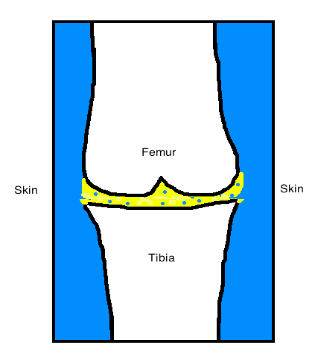
The knee, as a body part that undertakes multiple tasks such as walking, running, jumping, squatting, and kneeling durian, is self-evident.
However, the knee joint is also very fragile. It is a lossy accessory.
Once worn and cannot be repaired, many postures or movements in life will cause damage to the knee joint.
So, who has the worse knee, a regular runner or a sedentary person?
Many people might guess: the runner.
“Running puts a lot of pressure on the knees. The more you run, the worse your knees. Sitting for too long is not good, but it protects your knees from the pressure.”
It seems to make sense, but the scientist wants to say:
wrong answer!
Can I protect my knees without running or exercising?
1. People who sit for a long time and do not exercise have worse knees
2. Appropriate exercise force makes the knee joint stronger
3. Running correctly will not hurt your knees
People who sit for a long time and do not exercise have worse knees
We often talk about “knee pain” “knee abrasion” and other problems. If they develop to a certain degree, they are medically called “osteoarthritis” of the knee joint. It is the result of what many fear is the “injured knee”.
People who do not run or exercise have a higher incidence of knee osteoarthritis than people who do leisure running.
This is the result of a study published by the Prestigious American medical Journal “Journal of Orthopaedic & Sports Physical Therapy” (JOSPT) in June 2017.
This paper took 17 high-quality studies out of 25 with a total of 115,000 people, after statistical processing, the conclusion can be said to be the current research on the issue of high quality of evidence, credibility is also high.
After adjusting for weight, BMI, and age, the study compared the incidence of hip and knee osteoarthritis among recreational runners, sedentary runners, and competitive runners, and found that:
The incidence of arthritis in recreational runner (non-professional running) is only 3.5%
The incidence of arthritis in nonrunner is 10.2%
The incidence of arthritis in competitive runner is 13.3%

Looking at the knee joint data, the incidence of osteoarthritis in nonrunner is higher than recreational runner. This conclusion is still valid.
To put it simply: proper running exercise is good for joint health, and it does not make the knees more vulnerable. Instead, the behavior of not running or sitting for a long time will hurt the knees more.
Many people may find it unexpected: sitting for a long time without exercise clearly relieves the knee from the pressure of running and other sports. Why does it make the knee more likely to get injury?
Proper exercise force makes the knee joint stronger
The function of the knee on the body is like the bearing on the machine. Daily load, walking, running and jumping all need to rely on it to buffer and transmit force.
It is the most complicated joint on the human body, so it is also easy to be injured.
Small knee, made up of multiple parts

The femur of the thigh, the tibia of the lower leg, and the patella form joints
Cartilage, meniscus, etc. act as auxiliary buffer structures
Ligament and tendon reinforcement
Synovium and bursa mucosa are wrapped around
Due to the smaller contact area at both ends of the joint formed by the femur and tibia, the knee is more flexible than other weight-bearing joints, but it is also less stable and more prone to injury.
Fortunately, there is articular cartilage on the articular surface. Together with the meniscus, it can reduce friction on the articular surface and cushion shock and impact.
The nutrient supply of articular cartilage relies on the joint synovial fluid secreted by the joints. This synovial fluid flows in and out of the cartilage cells by squeezing, just like a sponge that absorbs water. When the joints are properly stressed, the cartilage cell metabolic waste is “squeezed out”. When the joint pressure is removed, new nutrients are “sucked in” with the negative pressure in the joint cavity.

Moderate exercise, on the one hand, can allow the joints to receive reasonable stress, so that the knee joint can complete more “squeeze-relax” nutritional metabolism cycles, and enhance the recovery ability of articular cartilage; at the same time, exercise will strengthen and maintain the strength of the leg muscles, which is also beneficial to stabilize the knee joint and reduce joint cushioning.
Sitting for a long time without moving will cause two problems:
1. The squeezing effect in the knee joint is significantly reduced, and the metabolism also slows down, and the nutrition required by the joint may not keep up;
2. Muscle strength gradually weakens due to decreased activity, and joint stability may also decrease.
If you gain weight due to less exercise, even walking will increase the pressure on your knee joints. Once you have to complete a large amount of exercise or high-intensity climbing, your knee joints may be overwhelmed and more likely to be injured.
Someone may ask, “Since proper running does not hurt my knees, why do I have knee pain after running?”
Run correctly without hurting your knees
“When running, the knee bears more force, and it will even produce 7 times the pressure of normal walking, which will definitely hurt the knee.”
This saying is widely circulated. Some people experience knee pain and other discomforts after running. Even if it is due to a wrong running posture, they will directly target the running itself, or even stop running or moving at all.
Every time you run, the knees do bear more pressure than walking, but one thing should not be forgotten: the knee joint has a certain ability to withstand and recover.
Control the amount of exercise to prevent excessive stress on the joints, and get enough rest to restore the joints, so that the joints will not be damaged, but will become stronger after exercise.
The impact of the knee during running can be seen according to the formula in classical mechanics:
I (impulse) = F (force) × t (time)
The impulse is broken down into the magnitude (strength) of the impulse and the time/frequency of the force.
Running properly and correctly is to control the impulse through the running posture, and then control the time through the running frequency, and leave a certain time for the joints to recover and rest.
According to the guidance in the clinical database UpToDate, it is best to do the following when running properly:
1. When a new runner starts running, the total daily training time should not exceed 20 minutes. Don’t want to challenge the marathon as soon as you come up.
2. It is best for new runners to train every other day to gradually improve aerobic fitness and musculoskeletal fitness.
3. Except for professional runners, most people recommend limiting the total weekly mileage to 65 kilometers.
4. It is best to run more than 20 kilometers in a single run every 14 days at most.
5. The number of running days per week should preferably not exceed 4 or 5 days, with at least 1 day off and 1 to 2 days for other sports.
6. Start training easily with dynamic warm-up or gentle jogging.
In addition, if you occasionally run downhill or on mountain roads, it is best to wear protective gear such as a patella belt.
Comments